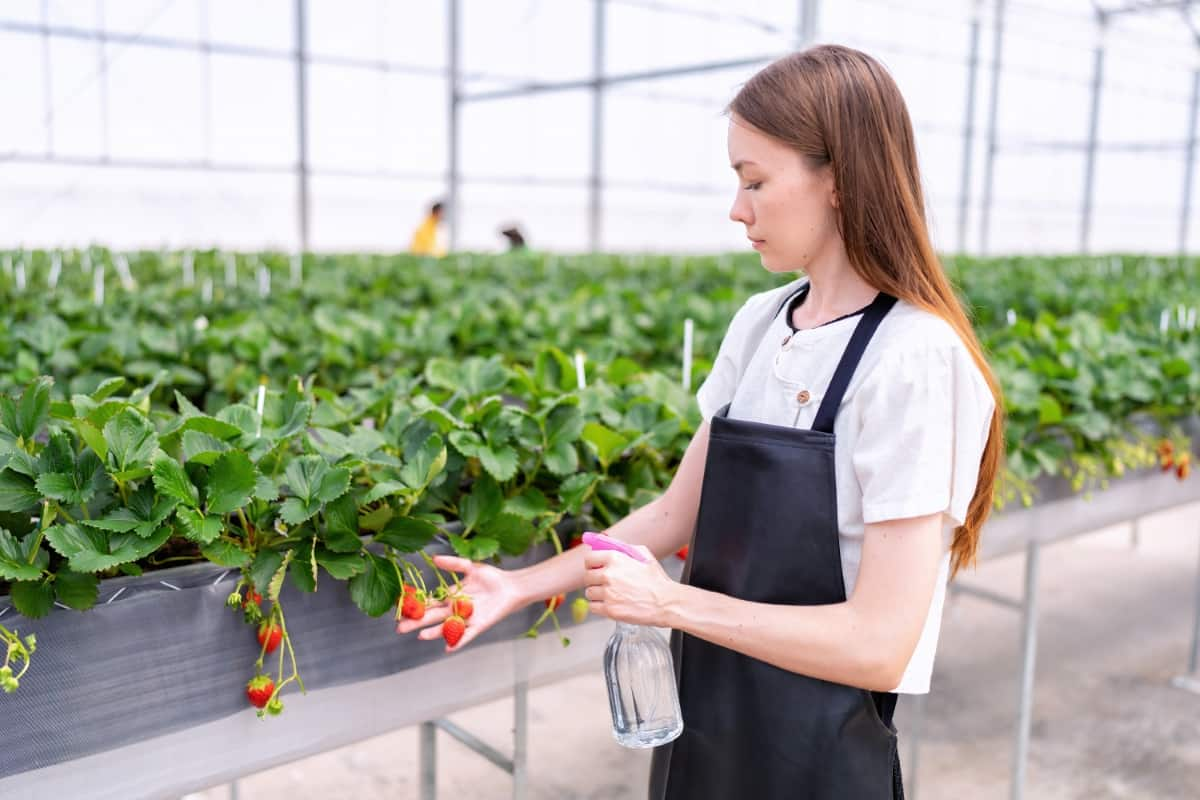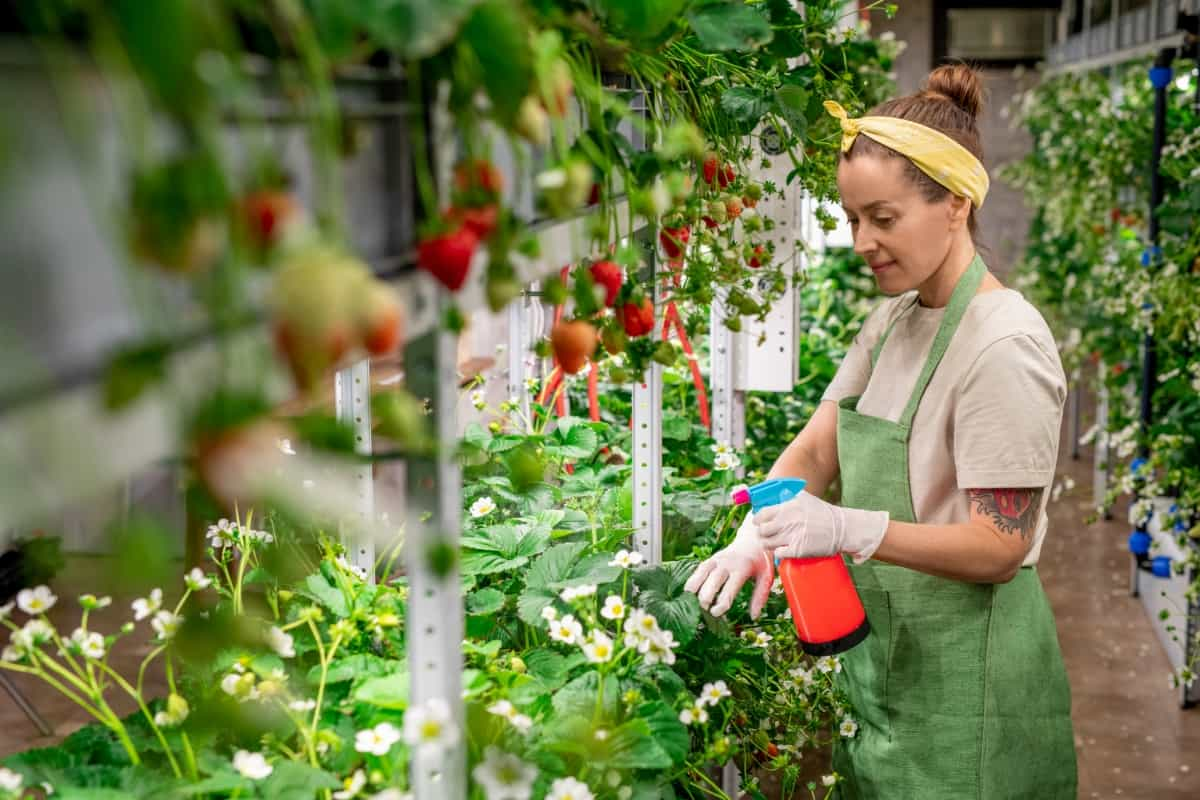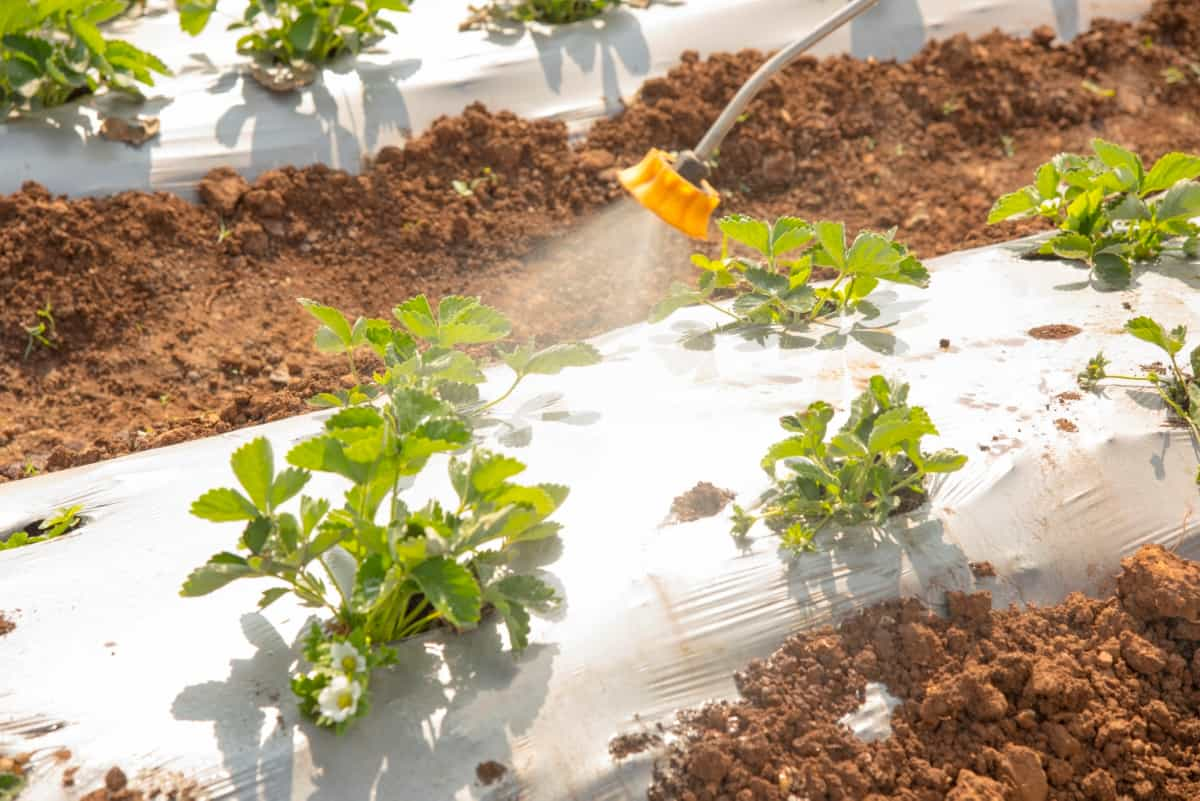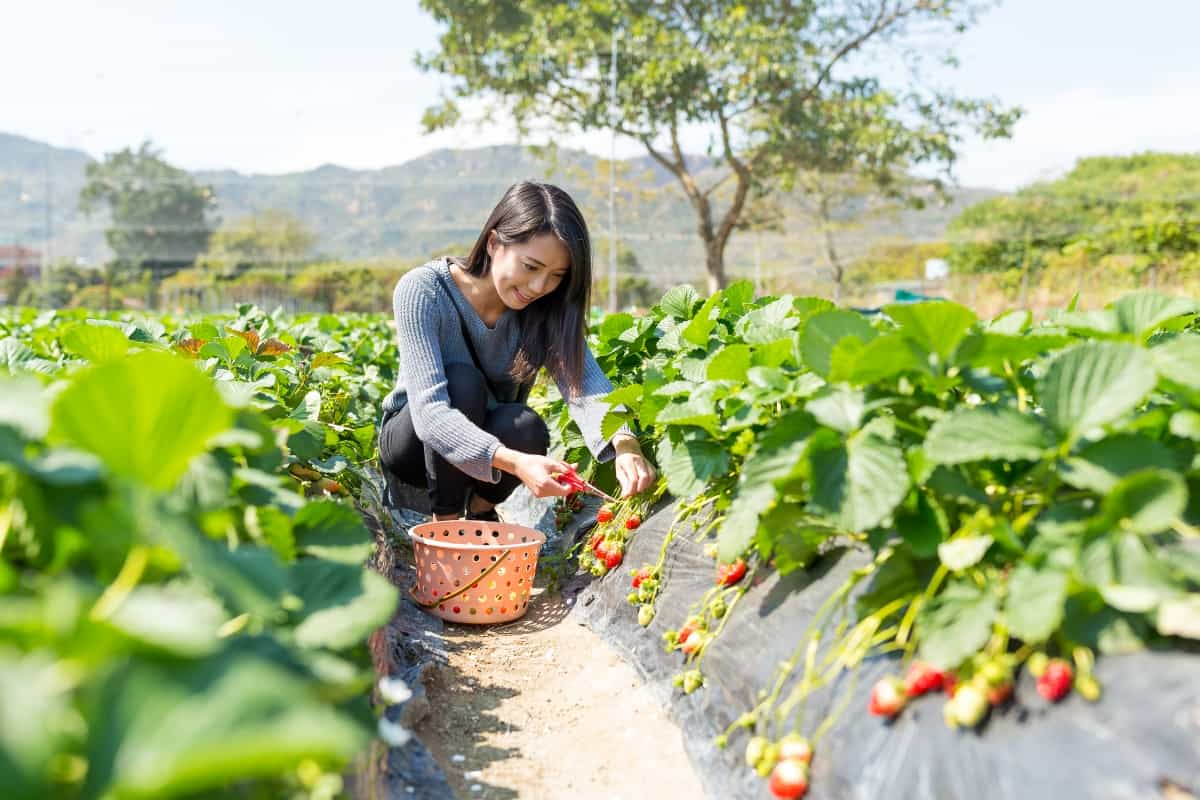Strawberries are delicious and nutritious fruits enjoyed by many, but they are susceptible to various diseases, with fruit rot being a common issue. While chemical fungicides are commonly used to control these diseases, there is a growing interest in natural and organic methods to prevent strawberry fruit rot.

Natural methods not only contribute to healthier and safer strawberries but also minimize the environmental impact associated with chemical treatments. In this guide, we will explore several natural strategies to prevent strawberry fruit rot, emphasizing sustainable and eco-friendly practices for home gardeners and small-scale farmers.
How to Prevent Strawberry Fruit Rot Naturally
Strawberry Fruit Rot Causes
- Gray Mold (Botrytis cinerea): One of the strawberries’ most common fruit rot causes. It thrives in cool, wet conditions.
- Anthracnose (Colletotrichum spp.): This fungus can infect various parts of the plant, including the fruit.
- Bacterial Soft Rot: Bacterial infections can occur through wounds or injuries on the fruit.
- Excessive Moisture: High humidity and prolonged wet conditions can create an environment conducive to fungal and bacterial growth.
- Poor Air Circulation: Lack of proper air movement around the plants can contribute to the development of fruit rot.
- Insect Pests: Insects such as strawberry weevils, mites, or beetles can damage the fruit, providing entry points for pathogens.
- Overhead Irrigation: Water on the fruit surface can create conditions for fungal growth. Drip irrigation is often recommended.
- Waterlogged Soil: Inadequate drainage can lead to excess water around the roots, making plants more susceptible to diseases.
Symptoms of Strawberry Fruit Rot
- Brown or Gray Patches: Infected strawberries may develop discolored patches, often starting as small spots and spreading.
- Gray Mold: A fuzzy, gray mold may develop on the surface of infected fruit, particularly under humid conditions.
- Bacterial Soft Rot: Infected fruit becomes mushy and may emit a foul odor due to bacterial activity.
- Anthracnose: Sunken, dark lesions with a pinkish color around the edges may appear on the fruit.
- Rapid Spreading: Fruit rot can spread quickly, especially in crowded or uncontrolled planting conditions.
Creating a Healthy Growing Environment for Strawberries
- Ensure well-draining soil is enriched with organic matter.
- Plant in full sun, providing at least 6-8 hours of sunlight daily. Adequate spacing between plants promotes air circulation, reducing disease risks.
- Employ drip irrigation to keep foliage dry, preventing fungal infections.
- Apply a balanced fertilizer and monitor soil pH (5.5-6.5).
- Mulch with straw to suppress weeds, retain moisture, and prevent soil splashing on fruit.
- Regularly prune to remove diseased plant parts.
- Choose disease-resistant varieties, and inspect plants frequently for early detection.
Employing Effective Crop Rotation Strategies
- Rotate crops annually to disrupt pest and disease cycles.
- Diversify plant families to enhance soil health and reduce specific pathogen pressures.
- Legumes, like peas or beans, fix nitrogen, benefitting subsequent crops.
- Avoid planting the same family consecutively to mitigate soilborne diseases.
- Plan rotations based on nutrient needs and growth habits.
- Integrate cover crops to improve soil structure and prevent erosion during fallow periods.
- Consider companion planting for natural pest control. Regularly assess and adjust rotation plans, adapting to environmental changes.
In case you missed it: How to Control Hydroponic Strawberry Pests and Diseases Naturally: A Sustainable Approach

Selecting Strawberry Varieties Resistant to Diseases
Opt for cultivars resistant to prevalent pathogens like Botrytis cinerea (Gray Mold) and Colletotrichum spp. (Anthracnose). Varieties such as ‘Allstar,’ ‘Albion,’ and ‘Eversweet’ are known for disease resistance. Consult local agricultural extension services for region-specific recommendations.
Disease-resistant strawberries reduce the need for chemical interventions and contribute to healthier plants and improved yields, ensuring a more sustainable and resilient strawberry cultivation. Regularly updated local information sources provide insights into the best disease-resistant varieties for your growing conditions.
Ensuring Sufficient Plant Spacing and Air Flow
Maintaining ample plant spacing and airflow is vital for plant health. Adequate spacing prevents overcrowding, minimizing disease risk by reducing humidity and promoting optimal air circulation. For strawberries, space plants about 12 to 18 inches apart in rows with a space of 3 feet between rows.
This ensures sunlight penetration and efficient drying of foliage, which is crucial for preventing fungal infections. Proper airflow also aids in pollination and discourages the proliferation of pests. Regularly trim runners and remove excess vegetation to uphold sufficient spacing, fostering a healthier growing environment and maximizing the productivity of your strawberry crop.
Consistently Monitoring and Eliminating Affected Fruits
Regularly monitoring and promptly removing affected fruits are crucial for maintaining a healthy strawberry crop. Inspect plants frequently for signs of fruit rot or disease. Identify and isolate affected berries promptly, disposing of them away from the growing area. This practice prevents the spread of pathogens and protects neighboring healthy fruits.
Regularly remove damaged or decaying berries, even those slightly affected, to break the disease cycle. This proactive approach minimizes the risk of widespread infections, ensuring a higher yield of quality strawberries. Diligent monitoring and timely removal contribute to overall plant vitality and successful harvests.
Leveraging Beneficial Insects for Pest Management
Introduce predatory insects like ladybugs, lacewings, and parasitic wasps, which naturally control harmful pests by preying on them. Planting diverse flowering crops attracts pollinators and predators, enhancing biodiversity. Avoid broad-spectrum pesticides that harm beneficial insects. Encourage natural predators to thrive by providing suitable habitats, like hedgerows or insectary plants. This integrated pest management strategy reduces reliance on chemicals, maintains a balanced ecosystem, and promotes a healthier, more resilient agricultural environment.
In case you missed it: How to Control Strawberry Pests Naturally: How to Get Rid of Them with Natural and Organic Treatment

Utilizing Organic Fungicides and Biocontrol Solutions
Utilize organic fungicides containing neem oil, copper, or sulfur to combat fungal infections in strawberries. Biocontrol methods involve introducing beneficial microbes like Trichoderma or Bacillus species to suppress pathogens. Deploying predatory organisms, such as beneficial nematodes, can control soil-dwelling pests.
Neem-based products, like neem oil, are insect repellents and fungicides. These organic approaches minimize environmental impact, preserve beneficial organisms, and promote healthier soil. Consistent application of these methods supports disease resistance, ensuring more sustainable and eco-friendly strawberry cultivation.
Boosting Soil Health through Organic Amendments
Enhance soil health through organic amendments, fostering a thriving environment for strawberry plants. Incorporate well-rotted compost, rich in organic matter, to improve soil structure, water retention capacity, and nutrient availability. Vermicompost, derived from worm castings, adds valuable microbial life.
Apply aged manure to provide essential nutrients while avoiding nitrogen imbalances. Utilize cover crops like clover to prevent erosion and fix nitrogen. Mulching with straw conserves moisture and regulates soil temperature. Organic amendments enhance microbial diversity, promoting a balanced ecosystem.
Adopting Sound Watering and Irrigation Practices
Utilize drip irrigation to deliver water directly to the root zone, minimizing leaf wetness and reducing the risk of fungal diseases. Water consistently but avoid waterlogged conditions by ensuring well-draining soil. Apply water in the morning to allow foliage to dry during the day, preventing nighttime fungal growth.
In case you missed it: Mango Root Rot and Damping-off Disease Management: Symptoms, Treatment, Chemical, Biological, and Organic Control

Adjust irrigation frequency based on weather conditions and plant needs. Mulching with straw helps retain soil moisture. Monitoring soil moisture levels and adapting watering practices accordingly ensures optimal hydration, promoting healthier strawberries and mitigating the risk of water-related issues.
Conclusion
In conclusion, preventing strawberry fruit rot naturally involves a holistic approach. These eco-friendly measures maintain a balance, minimizing reliance on synthetic chemicals and promoting resilient, naturally managed strawberry cultivation for a bountiful and sustainable harvest.
- Beneficial Insects in Pest Management
- Natural Solutions for Pest Control in Flower Gardens
- Types of Fungicides Used in Agriculture
- Common Issues in the Fruit Development Stage of Pomegranate Farming
- Fruit Development Issues in Papaya: Easy Solutions and Treatment
- Soil-Borne Diseases and How to Protect Your Plants
- Practices to Prevent Disease Spread in the Garden
- From Wilted to Thriving: How to Treat Root Rot Naturally in Houseplants
- Natural Remedies to Cure Brown Spots on Fig Tree Leaves